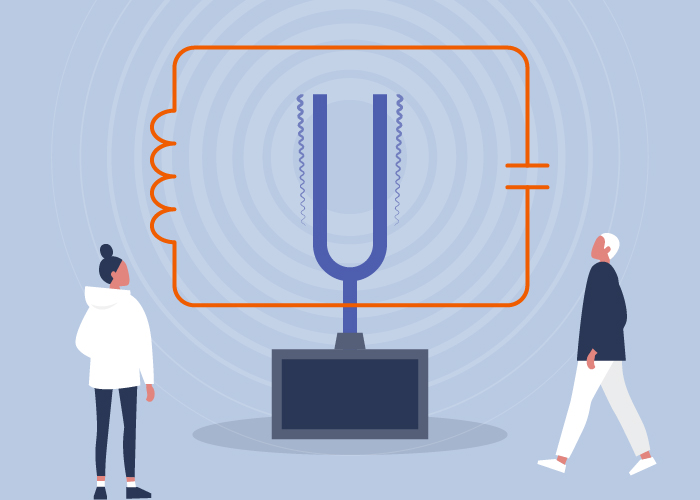Intro to EMC Topics
Components—Part 1: The Capacitor is the Simplest Noise Filter

Resistors, coils (inductors), and capacitors are the three major passive components that make up an electronic circuit. Capacitors, in particular, store electric charges, but they also play a major role in noise reduction. As digital devices become smaller and handle higher frequencies, the low-ESL and low-ESR types of bypass capacitors and decoupling capacitors are becoming more prevalent.
Noises have colors?
Noise that contains a variety of frequency components with approximately the same intensity is called white noise. The sound of rain, the gentle flow of a stream, the rustle of tree leaves... these are noises found in nature that are similar to white noise. Even if you listen to them at length, they are not as bothersome as you might expect; in fact, they can even have a relaxing effect and help you sleep better. Taking a hint from this idea, there are even devices called white noise machines that attempt to mask unpleasant noises around us by intentionally generating white noise. There are also smartphone apps that use white noise to help you fall asleep or enhance your concentration at work.


Just as white light can be broken down into the seven colors of the rainbow, white noise is composed of a variety of frequency components with approximately the same intensity. Irregular noise generated by electronic circuits is often white noise. Pulsating noise also contains many frequency components.
When white noise is filtered so that it becomes weaker as the frequency gets higher, the result is called pink noise or red noise. In the spectrum of sunlight, the frequency is higher on the blue side of the light. When the frequencies on the blue side are weakened, the red side becomes relatively emphasized, which is why it’s called pink noise or red noise.
If you were to give electric current a color, an ideal DC current—one in which the voltage is kept constant—would be colorless and transparent. On the other hand, you could say that an AC current flowing at a certain frequency has a certain color. Noise, which causes DC voltage to fluctuate frequently, can also be regarded as a type of AC current. Because noise usually contains a variety of frequency components, if it had a color, it would be a mixture of colors. And as the range of frequency components widens , it gradually approaches white noise. We sometimes say “pure white”—but when it comes to noise, “white” is the muddiest color of all.
When noise enters a DC current flowing inside an electronic circuit, voltage fluctuations could occur, leading to IC malfunctions. To deal with this, capacitors are widely used to remove noise. This is because a capacitor functions as the simplest noise filter by blocking DC current while allowing noise to pass. However, since there are many types of capacitors with different properties (frequency-impedance characteristics, etc.), if they are used in the wrong way, they can actually end up increasing noise.
Bypass capacitors are also called decoupling capacitors
In electronic circuits, capacitors are used for removing noise in the following ways:
(1) Across-the-line: Remove noise between two lines.
(2) Bypass capacitor: Remove noise from DC power supplies
(3) Decoupling: Block noise from other circuits by reducing the loop size of a circuit (reduce voltage fluctuations on the power supply line and suppress interference between circuits)
While (1) can be easily understood by virtue of the fundamental nature of capacitors, which is that they only pass AC but not DC current, (2) and (3) require a more detailed explanation.
If you take a look at the circuit of a digital device, you’ll find that many capacitors are connected to the power supply line of an IC. These are called bypass capacitors because they take noises that creep into the power line and shunt them to ground.
The bypass capacitor has another important role: it supplies the charge necessary for the operation of an IC and keeps the supply voltage constant. Here, the capacitor works like a battery. If there were no capacitors, the supply voltage would fluctuate as the IC operates, and the IC would essentially turn into a noise generator.
A decoupling capacitor is also closely related to the bypass capacitor, but serves a different purpose. The charge required for an IC’s operation may be supplied from another capacitor sitting far away. That’s a source of noise, so it needs to be blocked. Simply put, the objective of decoupling (3) is to make circuits independent of one another and prevent noise from jumping over the boundaries.
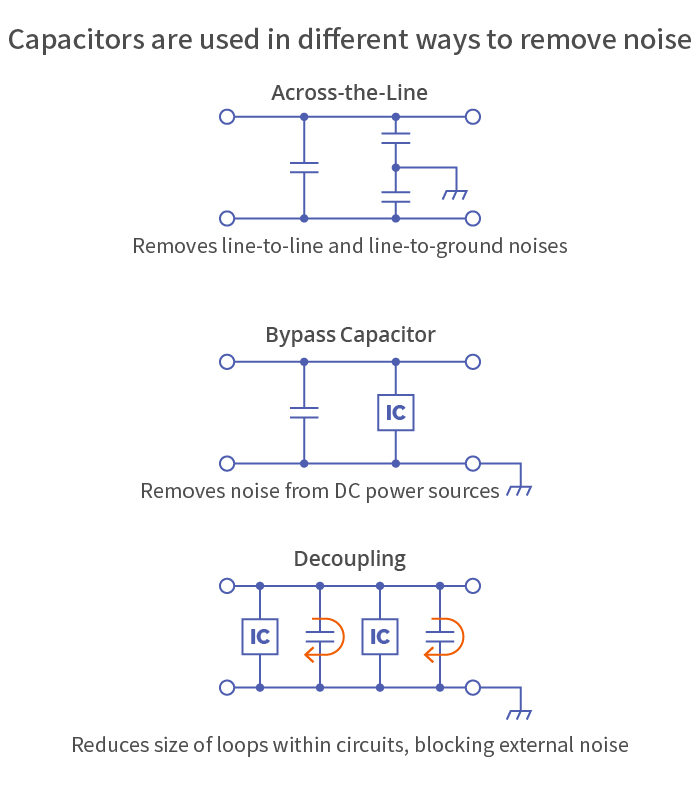
Why bypass capacitors are placed near ICs
Capacitors, although small, have some inductance and electrical resistance built into them. They are called ESL (Equivalent Series Inductance) and ESR (Equivalent Series Resistance). They are parasitic and unnecessary for the function of the capacitor, and using a capacitor with a large ESL or ESR value as a bypass capacitor will end up generating more noise.
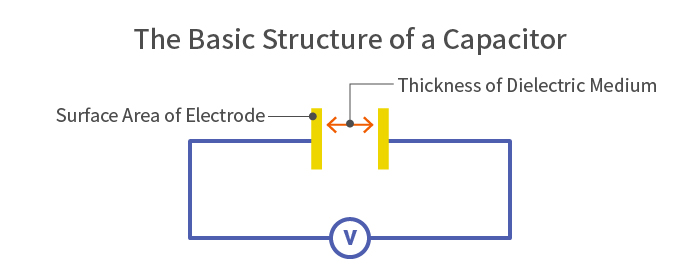
The capacitance of a capacitor is proportional to the surface area and permittivity of the electrodes, and inversely proportional to the thickness of the dielectric medium.
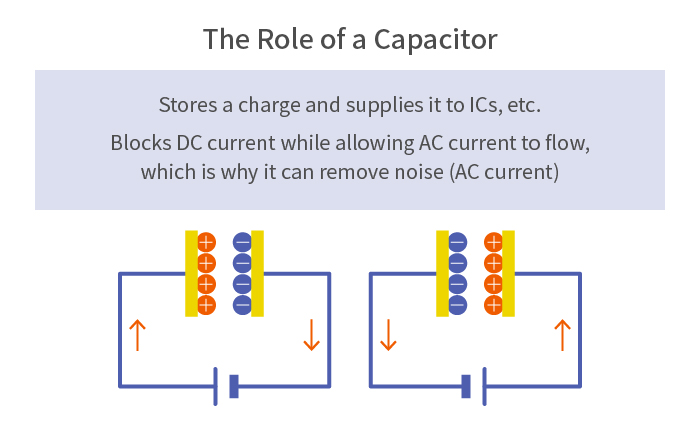
Every time the power supply is switched, the stored charge is repeatedly discharged and charged in the opposite direction, resulting in AC current flow.
In the past, it was necessary to place many capacitors in the proximity of an IC in order to lower ESR and ESL. The low-ESL capacitor solves this problem by requiring only one capacitor.
As a cardinal rule, bypass capacitors must be placed close to the IC. This is because even the wiring of a circuit behaves like an antenna, turning into a source of noise. Besides the circuit’s wiring, there are also paths of electrical current inside a bypass capacitor. The low-ESL capacitor is designed to make these paths as short as possible.
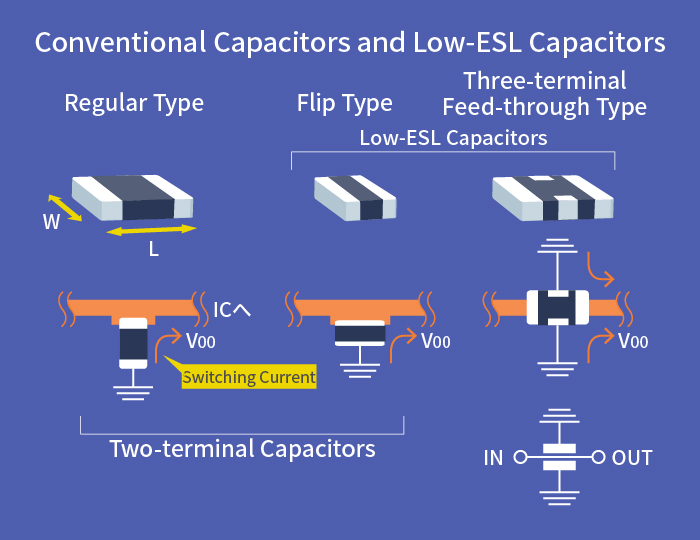
There are two types of low-ESL capacitors: the flip (reversed length-width) type and the three-terminal feed-through type. A regular two-terminal multilayer ceramic capacitor has terminal electrodes on the longer ends of the package, while a flip type has them on the shorter ends. By reversing the length and width, the paths of the internal electrodes become wider and shorter, resulting in lower ESL and ESR.
The three-terminal feed-through capacitor takes this thinking a step further. It has a stacked structure with ground electrodes sandwiching the inner electrodes, further reducing ESL than the flip-type capacitor. This is a powerful noise countermeasure for a time when digital devices are increasingly handling higher frequencies and becoming denser.
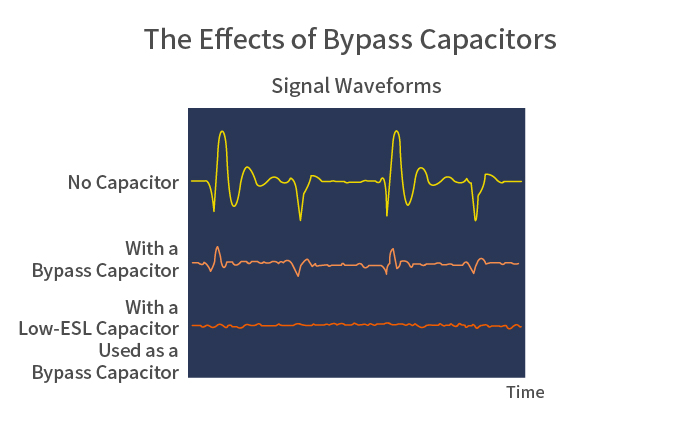
Compared to no capacitors or a regular bypass capacitor, the low-ESL type eliminates noise in a clean sweep.
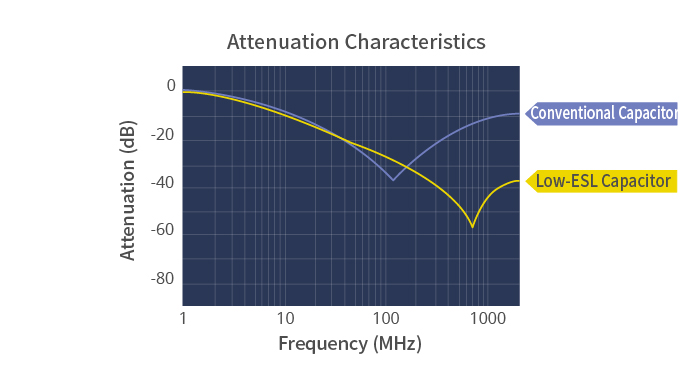
Compared to conventional chip capacitors, the noise bypassing effect is pronounced in higher frequency ranges.
TDK is a comprehensive electronic components manufacturer leading the world in magnetic technology




